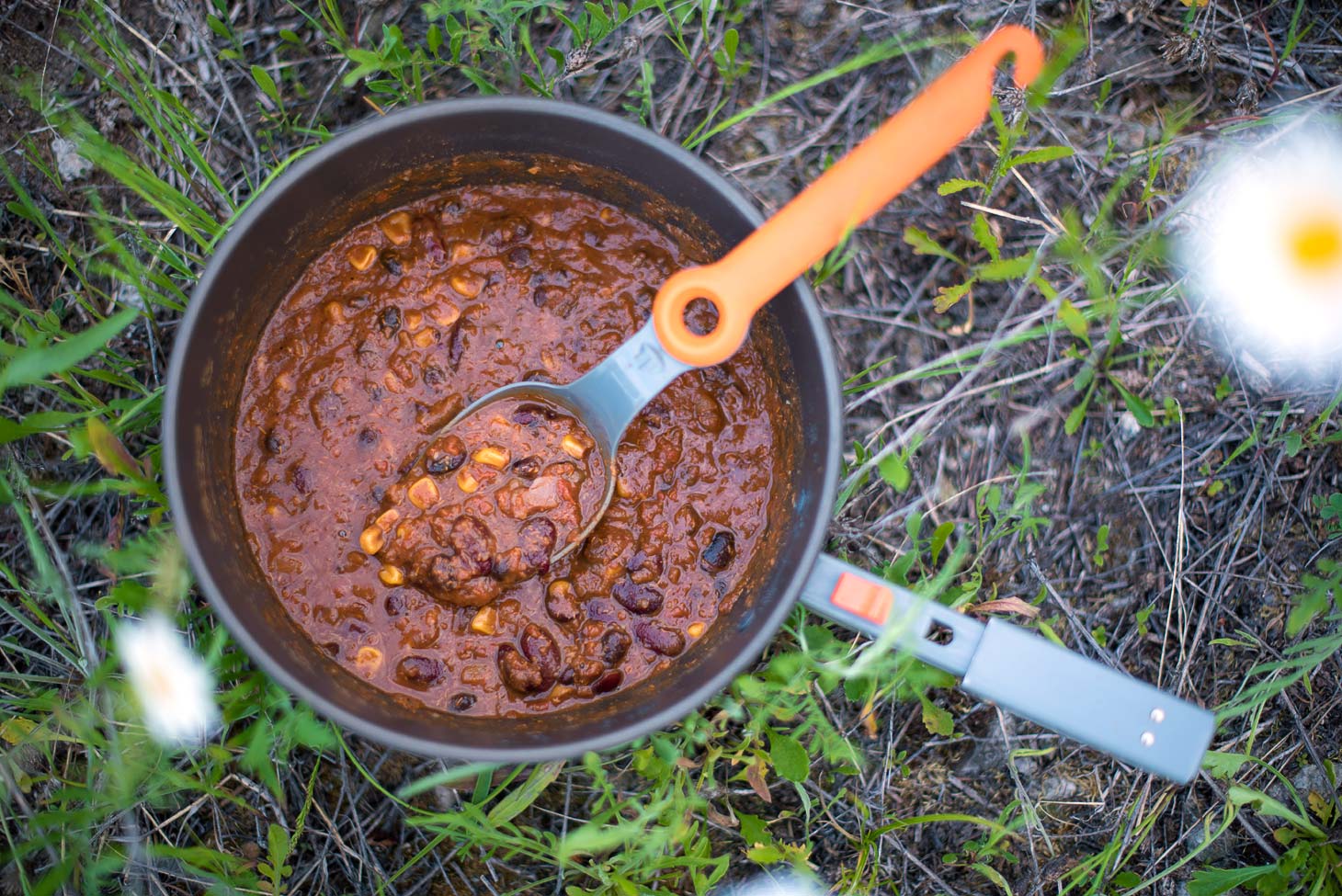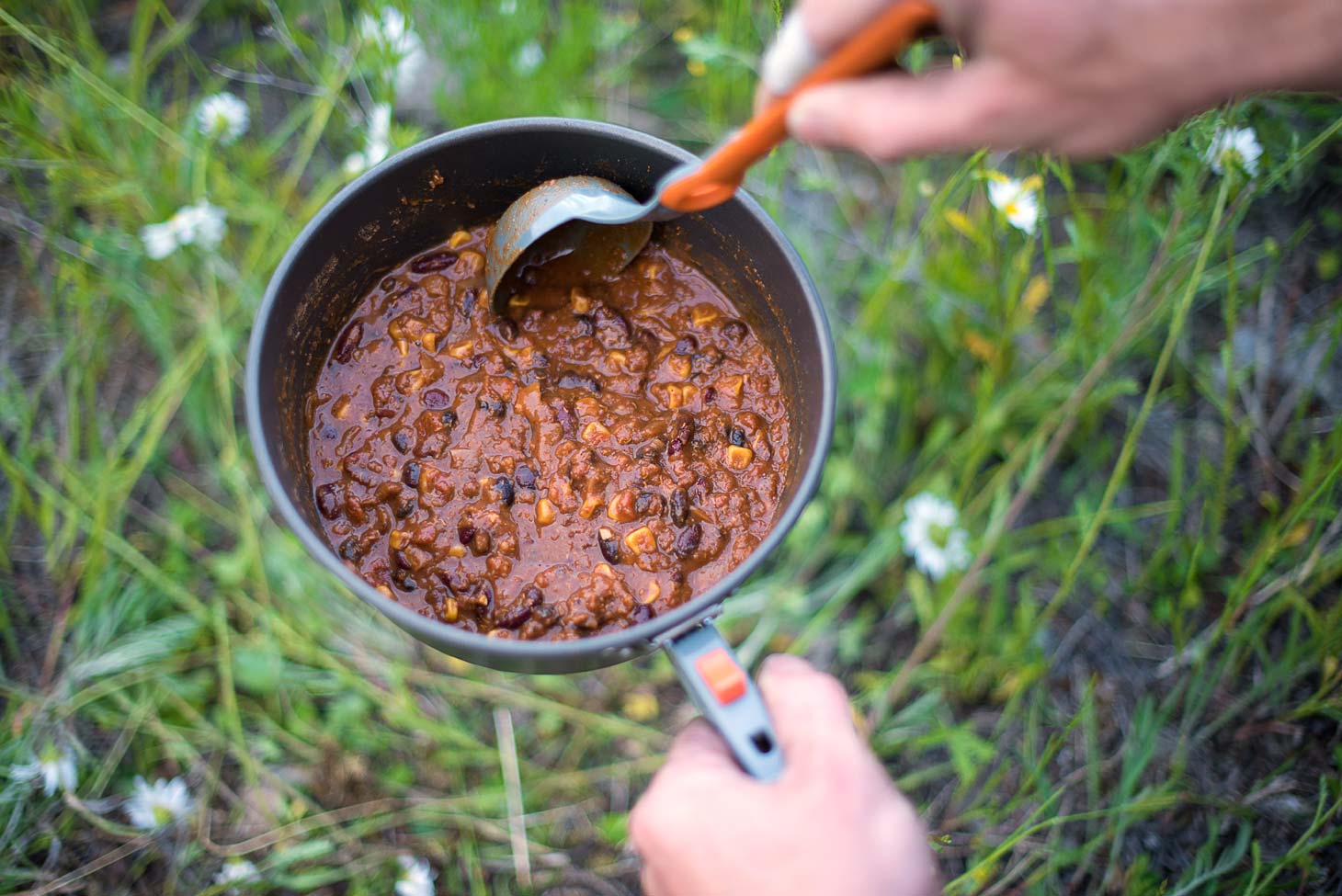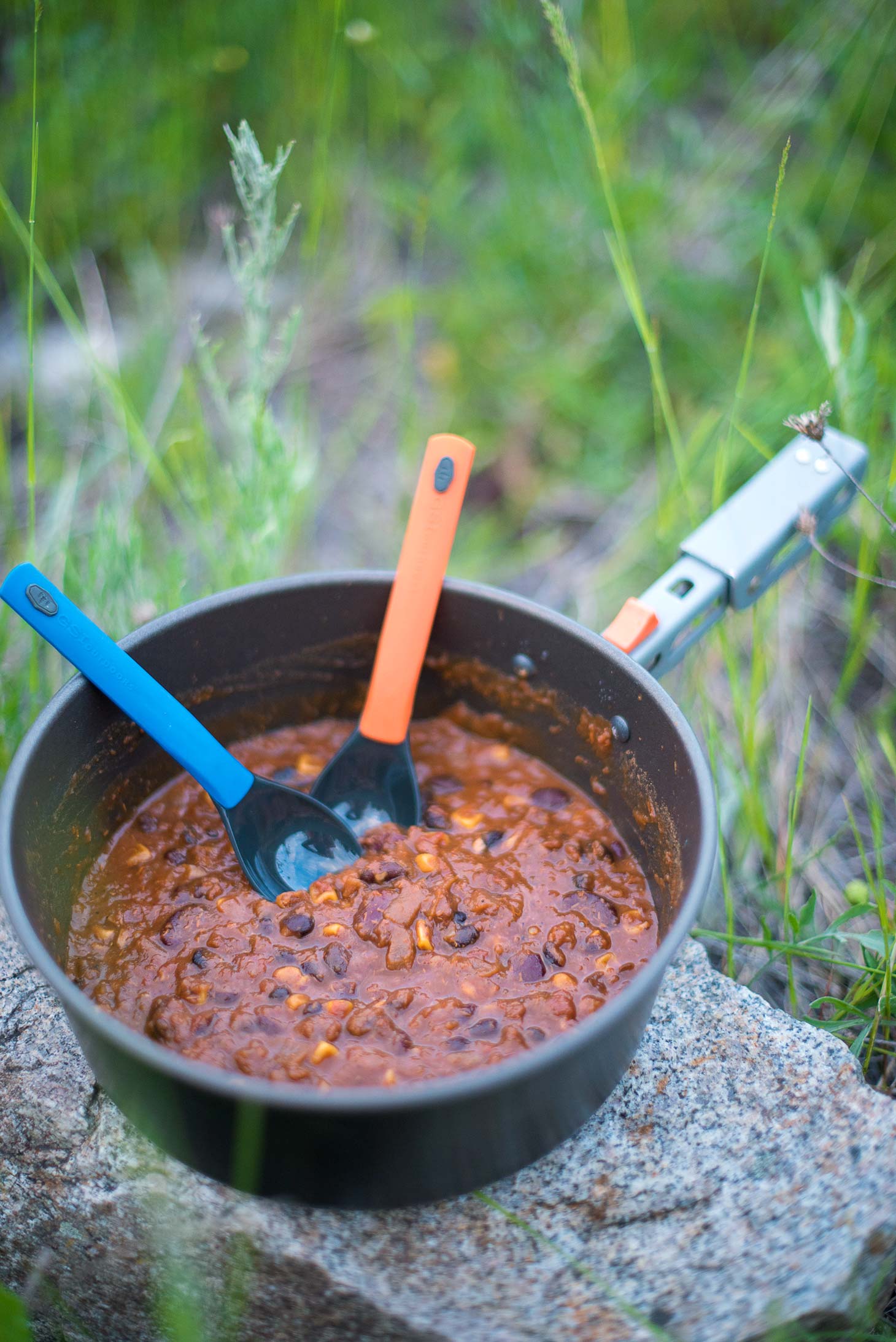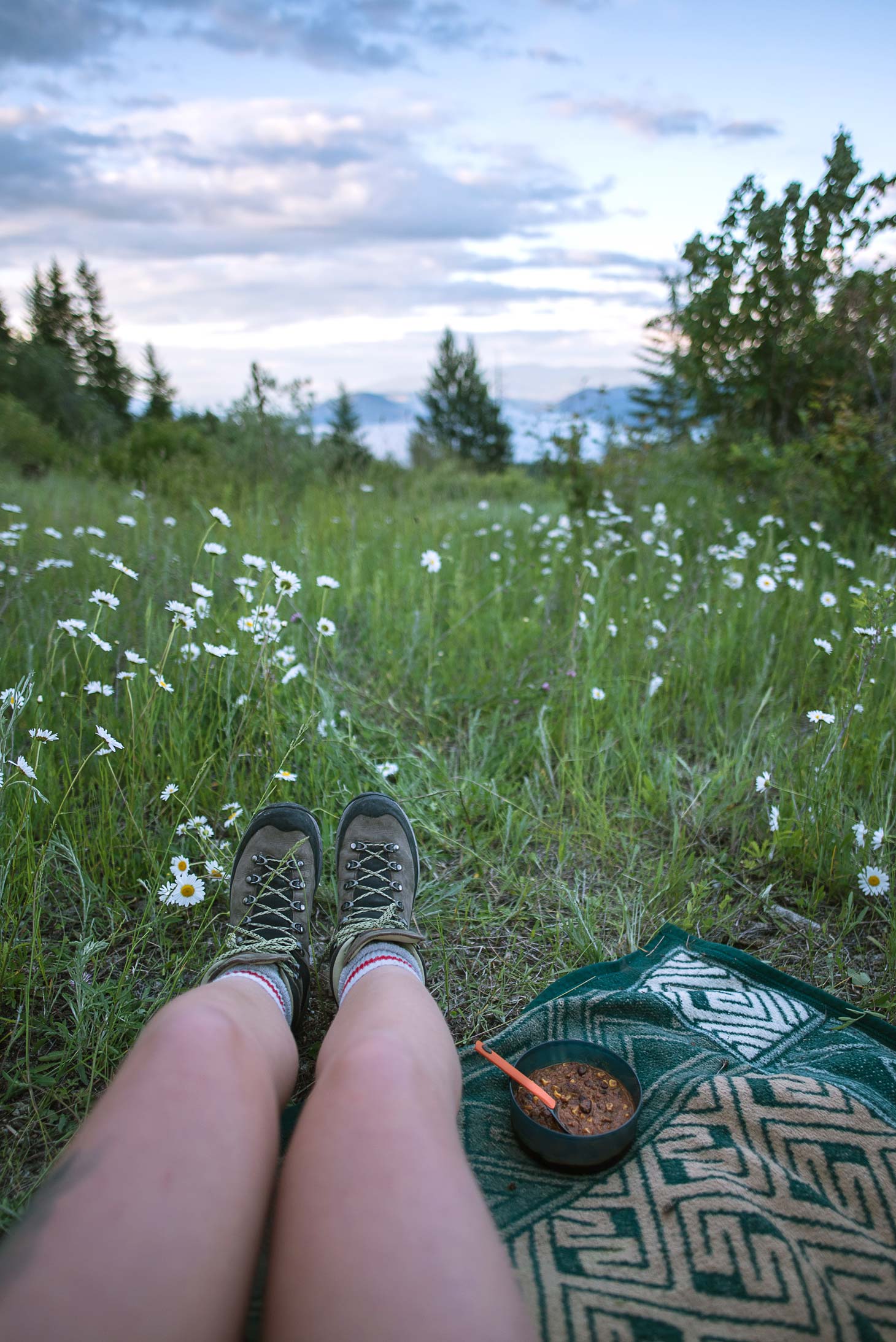Quinoa Chili
This post may contain affiliate links.
Lightweight and protein-packed, this homemade dehydrated chili is vegan and gluten-free. Fresh Off the Grid contributors Kira & Brendon Hak of Adventure Haks share how to make one of their favorite backpacking meals.

Life on the road or in the backcountry can use up a lot of energy so it is essential for any adventurer to eat meals packed full of nutrients for restoration. At the end of a full day of adventures, when the sun is setting, and the air begins to cool, nothing beats a hearty and warm bowl of chili.

This has been our go-to vegetarian chili recipe for years, so when we decided to try dehydrating our own meals, this was one of the first recipes in the line-up. A healthy, convenient, and quality meal for anyone on the go!
Have your own favorite chili recipe? Perfect! Throw all of the ingredients into a pot, but omit the water and/or broth. Heat & Cool. Dehydrate. Package and plan your next adventure!

GEAR SPOTLIGHT: Choosing a Dehydrator
From making homemade jerky and fruit leathers, to drying fresh fruits and vegetables for longer term storage, or even creating dehydrated just-add-boiling-water for backpacking trips or emergencies, there are dozens of ways to use a dehydrator.
As with most kitchen appliances, there are a number of options to choose from. There are two that we see over and over again. If you’re budget-conscious, the Nesco Snackmaster Pro is probably your best bet. If you will be doing a lot of dehydrating, you’ll likely be able to recoup the cost of one of the Excalibur model dehydrators, which has long held the position of best-of-the-best in the dehydrating community.


Ingredients
- 2 cups cooked quinoa
- 1 tablespoon olive oil
- 1 large onion, diced
- 6 cloves garlic, minced
- 2 (28 oz) cans diced tomatoes
- 1 (398 mL / 14oz) can tomato sauce
- 1 can diced green chiles, *Optional
- 2 ½ tablespoons chili powder
- 2 teaspoons cumin
- 2 teaspoons cacao powder, (cocoa works too)
- 1 ½ teaspoons smoked paprika
- 1 teaspoon cane sugar, (or any sugar you have on hand)
- ½ teaspoon coriander
- ½ teaspoon cayenne pepper, *Optional
- salt and pepper, to taste
- 1 (12 fl oz) can corn, drained & rinsed
- 2 (19 fl oz) cans kidney beans, drained & rinsed
- 1 (19 fl oz) can black beans, drained & rinsed
Instructions
PREPARE THE CHILI
- Cook 1/2 cup quinoa as per directions on bag & set aside (makes 2 cups cooked).
- Heat olive oil in a large pot over medium-high heat. Once the oil is hot add the onion and cook until tender, add garlic for the last few seconds.
- Add diced tomatoes, tomato sauce, cooked quinoa, chili powder, cumin, cacao, paprika, sugar, coriander, salt, and pepper. Add the chiles & cayenne if you like it spicy.
- Bring to a boil and then reduce to a simmer for 30 minutes.
- Add in corn and beans, cook until heated through.
- Remove from heat and let the chili cool.
DEHYDRATE & PACKAGE
- Spread evenly onto dehydrator trays. Dry at 145F/63C for 8-10 hours. Chili is done when the beans are dry.
- Evenly package into 6 servings, in air-tight containers (like ziplock bags) or vacuum seal. Store in a cool, dark & dry place.
ON THE TRAIL
- Pour dry chili into the pot; add 1 cup water per serving and stir well. Bring to a boil. Simmer, stirring occasionally, for about 20 minutes.
Notes
NUTRITION
525 calories9g fat
82g carbohydrates
22g protein *this information is an estimate based on myfitnesspal.com – actual values may be different based on your ingredient selection.
About The Author
Meet Brendon & Kira – The Adventure Haks. We are avid outdoor enthusiasts who enjoy any activity that will take us outside. Most of our time is spent motorcycle touring, where we can combine the freedom to explore new places with our love for hiking, fishing, and camping. We are currently living & adventuring in British Columbia, Canada. Follow along @adventurehaks and at adventurehaks.com

